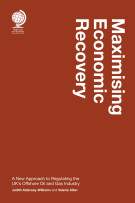
This is a much-needed work, few (if any) legal professionals are more qualified by dint of experience, contacts and skill than Isabel Parker to deliver these timely messages. The book is very well written, edited and laid out as a pure visual and production matter, is well documented (but not excessively or annoyingly) by endnotes, and most of all, is well supported on all key points by case studies and interviews. The latter, importantly, are not just from law firms, but as appropriate, from digital leaders outside the legal profession. Both lend additional credibility. The author’s approach is fair and balanced; she recognizes both the undeniable strengths and current limitations in a rapidly transforming world of the traditional law firm model. She offers several plausible paths that firms can take in order to adapt, while being keenly realistic about the likely challenges to be faced and difficult choices to be made by law firms that will rise to the challenge and earnestly commit to putting client service first in today’s (and tomorrow’s) world.
While focused on law firms, there are many lessons that can apply directly or with slight adaptation to in-house legal departments that are embarking on similar transformation journeys. These lessons are also helpful to corporate legal departments in terms of evaluating law firms’ innovation credibility and in picking a core group with which to partner. Similarly, vendors to both law firms and legal departments will find Ms. Parker’s insights very valuable since they provide such deep context and visibility into the workings of such a key element of the legal profession.
The focus on culture is spot on and often under-appreciated; somewhat similar challenges apply in-house since so many in-house attorneys are products of the same law firm culture (and to be sure, educational system and culture of exceptionalism). They still carry some of these characteristics. As such they are often a sub-culture within their corporations, even when the corporation’s dominant culture is more dynamic and innovative. They (myself included) need to recognize this as we seek to adapt and transform. The author’s insights - and the cited research findings - about the importance of cognitive diversity, pluri-disciplinary teams and minimizing the lawyer v. non-lawyer dichotomy when evaluating new ideas apply in both worlds.
Very well worth the cost and time spent in reading, highlighting and annotating carefully.
,





